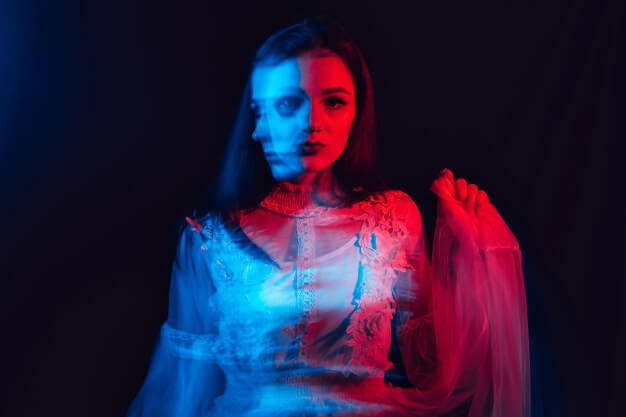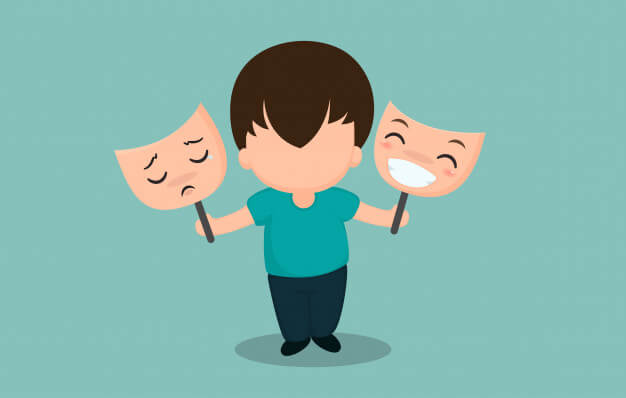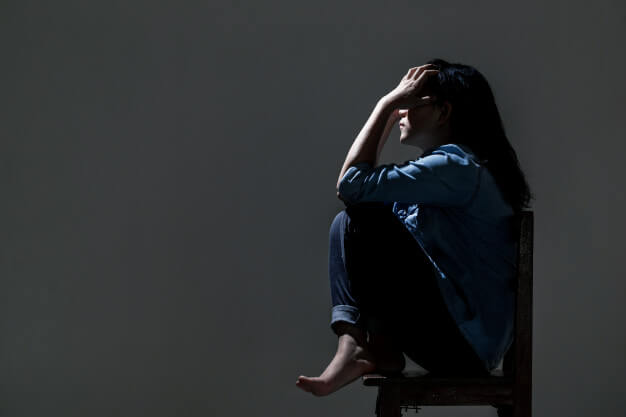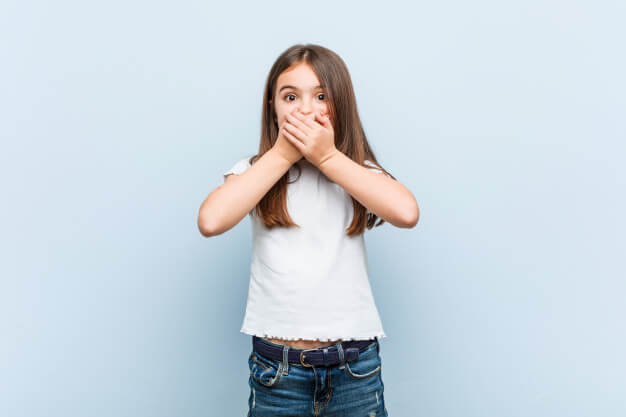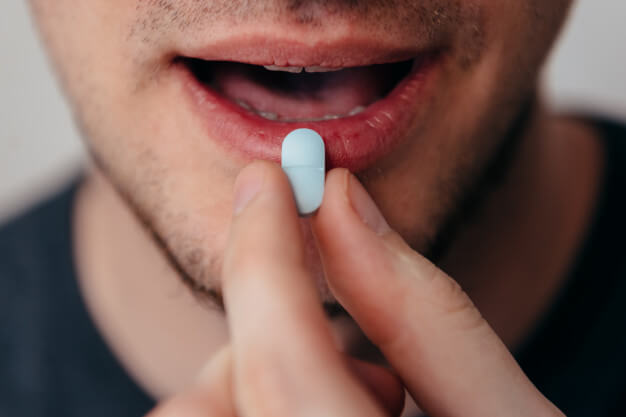List of Mental Health Disorders – All You Need To Know!
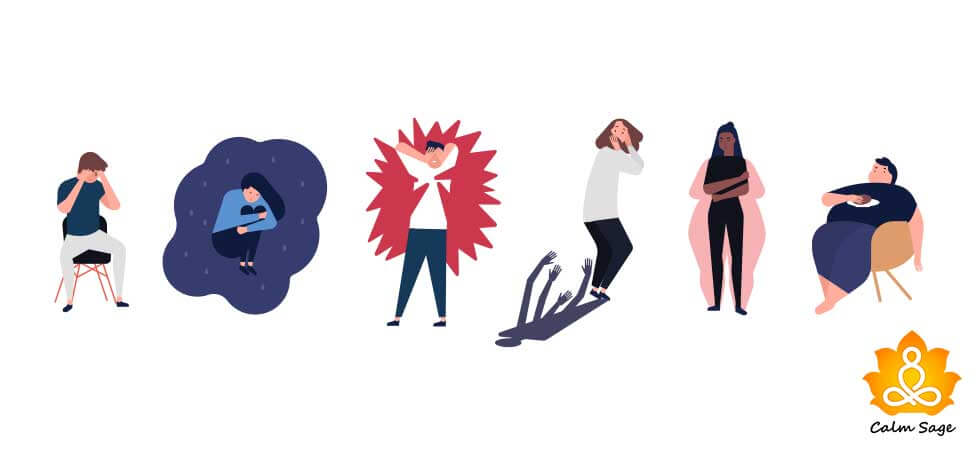
Historically mental health issues and disorders were treated as nothing less than a stigma. But, with the changing times, there has been adrift in this wave. Now people try and educate themselves about mental health disorders rather than hushing it! This indeed is important to break the mental health stigmas.
It is important to educate oneself and others about mental health and issues related to it. Here is a list of mental disorders that comprises some of the major disorders. This list is as per the recent edition of one of the widely used, Diagnostic and Statistical Manual of Mental Disorders- 5 (DSM-5).
Let us look at this list of psychological disorders as per DSM-5:
Disclaimer: This list of mental disorders is for basic information and a brief description of mental disorders. It doesn’t provide a basis for diagnosis.
List of Psychological Disorders and Their Symptoms:
1. Neurodevelopmental Disorders
This list of psychological disorders mainly focuses on the issues that typically arise during infancy, childhood, or adolescence. Some of the mental conditions in this mental disorders list can be completely resolved through proper interventions. While others are chronic, their extent can also be reduced through adequate interventions as well.
-
Intellectual Disabilities:
Formerly it was referred to as mental retardation, but now the terminology has changed. This usually develops before the age of 18, it can be seen in the form of limitations in a child’s intellectual and adaptive behaviors and is assessed through IQ tests. It is believed that children with IQ scores below 70 indicate the presence of certain limitations.
-
Communication Disorders:
It is characterized by a significant deficit to communicate. This can be seen in areas of speech, comprehension, and usage of language. DSM-5 identifies four types of communication disorders viz., childhood-onset fluency disorder (stuttering), language disorder, social (pragmatic) communication disorder, and speech sound disorder.
-
Autism Spectrum Disorder:
The important diagnostic criteria for autism spectrum disorder are- restrictive and repetitive patterns of behaviors and lack of social interaction. This interferes with daily life functioning of the children.
-
Attention-Deficit/Hyperactivity Disorder:
It is marked with two patterns that are, hyperactivity or impulsivity and inattention or being easily distracted. The diagnosis asks for these symptoms to show up before the age of 12 and interferes in at least two areas of functioning.
-
Specific Learning Disorder:
If there is a lack of proper development in a particular area of learning. It is characterized by substantially lower than expected academic performance. Some of the major disorders that are- dyslexia (reading disorder), dysgraphia (writing disorder), and dyscalculia (calculation disorder).
-
Motor Disorders:
They result from an impaired nervous system that leads to involuntary body movements. It can include symptoms like- twitches, jerks, contractions, or tremors. They are uncontrollable in nature.
2. Schizophrenia Spectrum and Other Psychotic Disorders
The most dramatic disorder in this list of mental disorders is schizophrenia. It affects the feelings, thoughts, and behavior of an individual just like other disorders in this psychological disorders list but, this is one with long-term conditions and complexities. Schizophrenia is an umbrella term with many disorders of psychotic nature falling under it. The person experiences either of the following symptoms:
Positive Symptoms:
The word positive here denotes an excess of emotions, thoughts, and behavior. This is further classified into four types
- Delusions:
There are false beliefs about a stimulus that is repetitive and persistent. The delusions are psychotic in nature and interfere in the day-to-day life of the person.
- Hallucinations:
They are false sensory experiences with no basis in the external world. They take place when the person is wide awake and not under the influence of any drug. These false and psychotic sensations are felt through all our five senses- hearing voice (auditory hallucination), seeing things (visual hallucination), tingling sensations on the skin (tactile hallucination), smelling things (olfactory hallucination) and smelling things (gustatory hallucinations).
- Disorganized speech:
Unlike basic speech errors made many of us, psychotically disorganized speech is beyond understanding in its nature. There are no linkage or language rules applied to speech that is being conveyed.
- Disorganized behavior:
The behavior demonstrated are not goal-directed or in content with the given situation. Thus, leading to problems in the daily functioning of an individual’s life.
Negative Symptoms:
The word negative here denotes a lack of emotions, thoughts, and behavior. The four types of negative symptoms of schizophrenia are:
- Flattened affect:
People with flattened effect generally show limited or no emotions at all. They respond with limited emotions even in emotional situations or disturbing images, making them look emotionless.
- Reduced speech:
It can be assessed on two parameters, either the individual is not fluent in speaking as s/he was or the speech (amount) reduces noticeably below than the usual.
- Lack of initiative:
The individual here loses all the will to engage
- Anhedonia:
Here the individual stops finding joy in situations that otherwise were enjoyed. This lack of joy can be easily identified by others and impacts more than just losing interest.
Read More: 21 Best Mental Health Books of All Time
3. Bipolar and Related Disorders
The bipolar disorder also referred to as ‘manic depression’ is characterized by significant mood swings. There are shifts between elevated moods (highs) and depression (lows). The high moods are also known as mania or hypomania. In between, there is a normal mood experienced by an individual. DSM 5 divides Bipolar disorders into four sub-categories
- Bipolar I Disorder
- Bipolar II Disorder
- Cyclothymic Disorder
- Bipolar Disorder due to another medical or substance abuse disorder
Note: In the case of children, bipolar disorder is referred to as disruptive mood dysregulation disorder with its own set of symptoms.
The alternate phases of this disorder are:
-
Mania:
Is marked by elevated and irritable mood for a distinct period. The individual experiences an increased level of energy and activity. They are generally distracted, irritable, and loaded with confidence for this period of high mood.
-
Depressive episodes:
Just like depression this phase is characterized by a sad mood, lack of interaction, and interest in activities, fatigue, and irritability. Along with this difficulty in sleeping and change in appetite can also be witnessed.
Irrespective in which phase the individual is, they both are overwhelming. Through proper treatment, including medications and therapy, an individual can manage the symptoms healthily.
4. Depressive Disorders
Another category of mood disorder in DSM-5 is depressive disorders. Unlike the previous category, there is no alternate or high phase associated with it. Rather it is characterized by feelings of sadness, irritability, along with other symptoms.
-
Major depressive disorder:
Marked with intensive signs of and symptoms of depression, this disorder leads to loss of pleasure and joy in activities. This further hinders the person’s ability to function as effectively as he used to.
-
Disruptive mood dysregulation disorder:
A condition usually found in childhood, where children display disruptive moods or throw frequent tantrums. There can be irritability and anger in children.
-
Dysthymia/ Persistent depressive disorder:
It is an ongoing state of depression wherein a person feels depressed most of the day for at least two years. The symptoms are the same as that of depression however; the intensity and timing keep on changing.
-
Premenstrual dysphoric disorder:
First time to be classified in DSM 5, this disorder is unique to women and their menstrual cycle. A woman is likely to show signs of depression a few weeks prior to the menstruation cycle along with other mood symptoms. It doesn’t stay for long; rather these symptoms go off with the cycle.
-
Substance/ medication-induced depressive disorder:
The symptoms of depression are witnessed in an individual if there is a case of substance use, abuse, or withdrawal.
-
Other or unspecified depressive disorder:
When the symptoms of an individual don’t meet any of the diagnostic criteria but are still there and create hindrance in the overall functioning of an individual.
-
Depressive disorder due to another medical condition:
Certain medical conditions may cause depression in an individual suffering from them. Here depression occurs as a comorbidity situation.
5. Anxiety Disorders
Anxiety is one of the most common emotions and feelings that we all experience in our lives and manage effectively. However, sometimes the level of anxiety exceeds what we can manage, which might take a form of mental distress. DSM categorizes anxiety-related disorders separately. Some of the common symptoms among all the anxiety disorders are- excessive and persistent worry, fear, and apprehension, which causes behavioral disturbances. The primary types of anxiety disorders are:
GAD is more than the daily life anxiety, it is an exaggerated and chronic; worry and tension experienced by an individual. This excessive worry and anticipation occur for at least 6 months, interfering in daily activities. Plus, it is difficult to control this worry.
-
Panic Disorder:
The onset of panic disorder is marked by a sudden panic attack, which takes place for no reason (out of the blue). As a result of this, people develop anxiety and are preoccupied with the thought of having another panic attack. Causing impairment in daily life functioning.
-
Agoraphobia:
Fear from a wide range of public places. The fear here is of getting a panic attack in a situation from which escape might be difficult. This avoidance of situations can make it difficult for an individual to leave their own home.
A person with social anxiety experiences an intense fear of being in social situations. Thoughts of getting humiliated, considering others to be better, and embarrassment are experienced by an individual.
-
Specific Phobia Disorder:
Persistent and marked fear about a specific object or situation which is unreasonable and excessive. Exposure to a phobic stimulus leads to a sudden anxiety response. This, in turn, interferes significantly with the person’s daily routine.
An important point to note here is that none of the anxiety disorder and its symptoms arises from substance use or abuse, or general medical conditions.
6. Obsessive-Compulsive and Related Disorders
Until DSM 5 OCD was under the category of anxiety disorder but now it has its own category. This includes the following disorders
For an individual to be diagnosed with OCD there must be either obsession, or compulsion, or both. Obsession means recurrent thoughts that create anxiety and compulsion are the repetitive acts that relieve that anxiety.
-
Body-Dysmorphic Disorder:
An individual with the disorder has an over-concern with an imagined or real defect/flaw in the appearance. Along with this, there is a constant focus on working to eliminate it or fix it. This defect is not seen as a minor flaw by others.
-
Hoarding disorder:
A constant urge to collect and not get rid of possessions (irrespective of the monetary value) that an individual has. The mere thought of partition with these possessions brings distress.
- Excoriation
Disorder:
Also referred to as skin-picking disorder. Here the individual is constantly engaged in picking skin, which in turn causes injury and lesions. Followed with failure to stop engaging in this behavior.
-
Trichotillomania:
Also referred to as hair-pulling disorder. The individual has a constant urge to pluck hair (of self or hairy objects like toys). It might even cause hair loss.
- Substance/medication-induced obsessive-compulsive and related disorder
- Obsessive-compulsive and related disorder due to another medical condition
Read More: Top 10 Movies About Psychological Disorders
7. Trauma- and Stressor-Related Disorders
Previously grouped with anxiety disorders, DSM-5 has given a different category to disorders that arise due to exposure to a stressful situation or a traumatic life event. This includes the following categories:
-
Post-traumatic disorder:
Generally experienced by those who have been exposed to a serious injury, trauma, sexual violence, or actual or threatened death, this disorder can be overwhelming. Some of the symptoms that an individual with PTSD experiences are- frequent nightmares, flashbacks, burst of anger, feeling on edge, negative thoughts, exaggerated startle responses, and loss of focus.
-
Acute stress disorder:
Severe anxiety for up to a month after being exposed to a traumatic event. Followed by symptoms like vivid flashbacks, altered sense of reality, reduced emotional responsiveness, and others.
-
Adjustment disorder:
Both adults and children are likely to get affected by this when there is a sudden change in life such as separation, death of a loved one, loss of a job, or some other loss. The individual faces difficulty adjusting to the relatively new life situations along with symptoms such as- irritability, anxiety, feelings of loneliness and hopelessness, constant worries, to name a few.
-
Reactive attachment disorder:
This disorder generally occurs in children who face difficulty in forming healthy relationships and attachment with their adult caregivers. As a result, the child faces emotional and social disturbances along with withdrawal from the adult caregiver.
8. Dissociative Disorders
When dissociation takes place, that is, the common functioning of the consciousness gets interrupted it is known as a dissociative disorder. It even leads to dissociation in identity and memory. Some of the major dissociative disorders are:
For many years it was known as multiple personality disorder but now the terminology has been revised. The hallmark of this disorder is that an individual has at least two (or more) different identities or personalities that act completely independently of each other.
-
Depersonalization:
Often referred to as derealization disorder, it is marked with an alternation in the experience of the self (with no disturbance in memory). Generally, triggered by self, the individual here loses the sense of self, detachment from one’s mental processes and body.
-
Dissociative amnesia:
Here the individual is unable to recall important personal information or information about a traumatic event. This inability to recall is more than just forgetfulness because instead of complete memory being washed off the unpleasant aspects are not remembered. It starts suddenly and disappears abruptly as well.
9. Somatic Symptom and Related Disorders
These disorders are related to soma which means body. The surprising fact here is that there are no bodily symptoms associated with it nor are they produced by an individual on intention. Recent diagnosis focuses more on inappropriate thoughts, behaviors, and feelings associated with its symptoms. Disorders included in this category are:
-
Somatic symptom disorder:
People with this disorder make frequent visits to the physicians because they are preoccupied with their bodily symptoms. This further hampers their day-to-day functioning. The symptoms are neither being faked here nor they are attached to medical conditions.
-
Illness-anxiety disorder:
Previously referred to as Hypochondriasis this disorder is characterized by an excessive concern and preoccupied fear of having an undiagnosed illness/medical condition. This further causes distress and anxiety. This fear continues even after medical reassurance.
-
Conversion disorder:
The person here experiences sensory as well as motor symptoms but without any physiological cause and neurological explanation. Generally, the symptoms start developing as an emotional response that follows a stressful life event.
-
Factitious disorder:
Until the recent update of DSM, this disorder was classified as a category of disorder on its own. An individual here creates, fakes, and exaggerates symptoms of illness (on purpose).
10. Feeding and Eating Disorders
Eating disorders are marked by excessive concern and worry about weight. This leads to disruptive eating patterns which lead to an ill impact on physical and mental health.
The major classifications of the eating disorder are briefly described below.
-
Anorexia Nervosa:
With a constant fear of gaining weight, individuals with anorexia nervosa constantly restrict the amount of food consumed by them. Even if the person is fit and slim they continue to have a distorted vision of their appearance.
-
Bulimia Nervosa:
It is marked with two episodes first the individual binges (overeats) and later purges it out through self-induced vomiting, laxatives, or diuretics. This way they compensate for whatever excess was consumed.
-
Binge-eating Disorder:
First introduced in DSM 5 is marked by frequent episodes of consumption of an unusually large amount of food over a couple of hours alone. These episodes are called binge-eating. Generally triggered by overwhelming emotions an individual ends up overeating with no control over their eating.
-
Rumination Disorder:
The individual with this disorder chew the food, swallow it, and then regurgitate it by either spitting it or re-swallowing it.
-
Pica:
One of the most dramatic disorders in this psychological disorders list is Pica disorder. It is marked with cravings of non-consumable food items such as soap, dirt, or paint.
Note: Till DSM-IV feeding and eating disorders were classified separately but, DSM 5 has clubbed them together.
11. Elimination Disorders
Elimination disorder is diagnosed in children who have been trained and are old enough to eliminate their waste properly but are facing trouble in the same way from the past few weeks or months. There are two categories of this disorder:
-
Enuresis:
Repeated episodes of urinating in inappropriate places, causing distress or impairment in a child’s overall functioning. It involves urinating at inappropriate times and places.
-
Encopresis:
Repeated episodes of passing feces into places other than the toilet, like- floor or clothes.
12. Sleep-Wake Disorders
Sleep disorders are among the most common clinical problems in mental disorder list. Sleep is of the utmost importance in leading a healthy life. However, many individuals face serious difficulties and disturbances in their sleep pattern which leads to distress.
Some of the major sleep-wake disorders are:
-
Insomnia Disorder:
The most complaint of this disorder is difficulty in initiating maintaining a sound sleep (for almost 3 months). This lack of adequate sleep leads to significant distress and impairment in almost all areas of functioning.
-
Parasomnia:
It features abnormal behaviors that take place during sleep (alone). It includes a wide range of behavior like- sleepwalking, sleep eating, sleep talking, and sleep, terrors.
-
Narcolepsy:
It produces cataplexy wherein an individual goes through brief episodes of sudden and bilateral loss of muscle tones.
-
Breathing-related sleep disorders:
All the sleep disorders resulting from breathing anomalies fall under this category such as sleep apnea. These breathing issues cause a disturbance in sleep.
-
Hypersomnolence:
Earlier known as hypersomnia, it is marked by recurrent episodes of excessive daytime sleepiness or prolonged nighttime sleep. This does not happen because of lack of sleep rather the person is compelled to nap repeatedly during day time. This might lead to adverse outcomes.
-
Restless Leg Syndrome:
This neurological disorder disturbs the sleep of an individual with uncomfortable bodily sensations followed by frequent movements of legs (to get the comfort)
13. Substance-Related and Addictive Disorders
Nearly half of the population uses some or the other form of substance. But if the pattern of consumption becomes problematic and impairs the daily functioning of an individual, then it is classified under this category of disorders. Depending on the substance being used or abused substance-related disorder includes:
-
Alcohol-related disorder:
Overconsumption of alcohol with an inability to stop using it, despite knowing the adverse outcomes that are likely to follow.
-
Tobacco use disorder:
Overconsumption of tobacco and difficulty in cutting back or quitting it.
-
Inhalant-use disorder:
Consumption of fumes from substances like paint, solvents, etc.; along with difficulty to stop oneself in engaging this behavior.
-
Cannabis-related disorder:
Using more than originally intended dose, facing adverse effects of it on life, and facing difficulty to stop its usage.
-
Stimulant use disorder:
Use and abuse of stimulants such as cocaine, meth, or amphetamines.
-
Gambling Disorder:
Uncontrollable urge to gamble, disturbing daily life functioning.
-
Caffeine-related Disorder:
Overconsumption of caffeine and related products creating a sense of dependency for normal functioning.
It is not just the use and abuse of the substance that is associated with diagnoses of substance-related disorders, other conditions such as- intoxication, withdrawal can also be the reason.
14. Neurocognitive Disorders
The primary focus of this category of the disorder is ‘cognition’ or ‘cognitive functioning’ of a person. Excluding the cognitive dysfunctions that are there since birth or develop in early years of life, it includes the following disorders:
-
Delirium:
A state of confusion that develops over a short period of time and creates disturbances in the ability to be aware and attentive of the current surrounding. There could be various reasons underlying the same.
-
Major and mild neurocognitive disorders:
Depending on the intensity and level of cognitive decline in areas such as language, memory, perception, or learning there can be mild or major neurocognitive disorders. They generally arise as a result of medical conditions, ranging from Parkinson’s disease to HIV infection.
15. Personality Disorders
Personality disorders result in maladaptive patterns of thinking and behavior.
Some of the most common personality disorders in the list of mental disorders are: abnormal psychology book
-
Narcissistic Personality disorder:
Having a grandiose view of oneself and one’s abilities. They are highly self-centered in nature, looking for constant attention and admiration.
-
Borderline Personality disorder:
This includes symptoms like impulsivity and instability in mood and relationship. There can be seen abrupt shifts in emotions from passionate idealizations to anger outbursts.
-
Avoidant Personality disorder:
Due to fear of criticism, rejection, and disapproval people with this disorder tend to avoid relationships, social gatherings, and even jobs to protect themselves.
-
Dependent Personality disorder:
The core features here are overreliance on others (constant need to be taken care of by others) and lack of self-confidence.
-
Schizoid Personality disorder:
People with disorder neither desire nor enjoy social relationships. They generally don’t have close friends with no warm and tender feelings for others around them. They even appear to be dull and aloof.
People with this disorder distrust everyone and perceive their intentions as malevolent, without any justification or a clear piece of evidence.
-
Histrionic Personality disorder:
People with this disorder seek attention in every situation. If they are not the center of attraction they feel uncomfortable and engage in socially inappropriate behaviors, rapidly changing their emotions to attract attention.
- Schizotypal
Personality Disorder:
People with this disorder experience odd beliefs, eccentricities in speech, thoughts, and appearance. This further makes it difficult for them to form and maintain relationships.
The person here is after perfection and is preoccupied with rules, details, and schedules. They often become total control freaks, with rigid and inflexible behavior.
16. Disruptive, Impulse-Control, and Conduct Disorders
Characterized by an inability to control behaviors and emotions, to an extent where an individual might harm oneself or others are impulse control disorders. The resulting actions are found to violate societal norms and authority laws.
This involves the following disorders:
-
Intermittent explosive disorder:
The term explosive here is metaphoric. People with this disorder explode, in other words, they have frequent and out of proportion instances of anger outbursts. The person reacts in an aggressive and violent manner even to the mere inconvenience in life.
-
Conduct disorder:
Usually diagnosed among children and adolescents under the age of 18, this disorder considers signs and symptoms that violate societal and authority laws. There is a range of misconduct that can be addressed here like- harming property of others (on intention), stealing, etc. The outcomes are likely to interfere in the normal functioning of a child.
-
Oppositional defiant disorder:
This disorder begins before the age of 18 and is marked by behaving defiantly (not complying with adult requests). While growing up there are certain instances and growth phases when a child refuses to comply, but here it is topped with irritability, anger, annoying acts, and aggression.
-
Pyromania:
A one phrase explanation of this disorder is- “setting things on fire.” The person here is fascinated by looking at the fire and its final results. It often puts the life of self and others.
-
Kleptomania:
It is marked with an uncontrollable impulse to steal. It is surprising to see that there is neither a need and often no monetary value attached with the items that are being stolen, It is a three-step process that a person is involved in here- tension prior to stealing, stealing the item, gratification and sense of relief after stealing.
Apart from this list of mental disorders, few more disorders are identified by DSM-5. But, their rate of occurrence is less. However, it is equally important to understand them and be aware of them. This Includes:
-
Sexual Dysfunctions:
It takes into concern the problems that are likely to occur as a problem at any phase of the sexual response cycle, interfering with the satisfaction expected. They are further classified into four categories- desire disorders, arousal disorders, orgasm disorders, and pain disorders.
-
Gender Dysphoria-
The feeling of distress that follows from incongruency between gender identity and the sex assigned to them by birth. The individual might feel uncomfortable with their own body.
-
Paraphilic Disorders:
This list of psychological disorders comprises sexual arousal towards objects, situations, and targets that are not usual and often inappropriate. The most common paraphilic disorders are- pedophilia, voyeurism, exhibitionism, fetishism, and transvestic disorder.
-
Other Mental Disorders:
The disorders that are not classified in any other cluster of disorders (as discussed above) but exist in the population are placed under this section in the list of mental disorders.
-
Medication-Induced Movement Disorders and Other Adverse Effects of Medication:
there are certain mental health conditions that result from medication are discussed as part of this section. It covers various disorders like- dyskinesia, akathisia, and dystonia.
-
Other Conditions That May Be a Focus of Clinical Attention:
This section doesn’t talk about disorders; rather it covers the core aspects that might be the underlying cause of a particular disorder. This includes problems related to family upbringing, primary support group, abuse, and neglect, to name a few.
All of the disorders that are presented in this list of mental disorders are found to disrupt the daily life functioning of an individual. Therefore, it’s important to address them and work on them. These conditions can be treated through proper therapies and medications.
You May Like these Also:
Do’s and Don’ts for Recovering From Eating Disorders
Top 10 Movies About Psychological Disorders
Avoiding These Vitamins Can Trouble Mental Health. Start Them Today!


